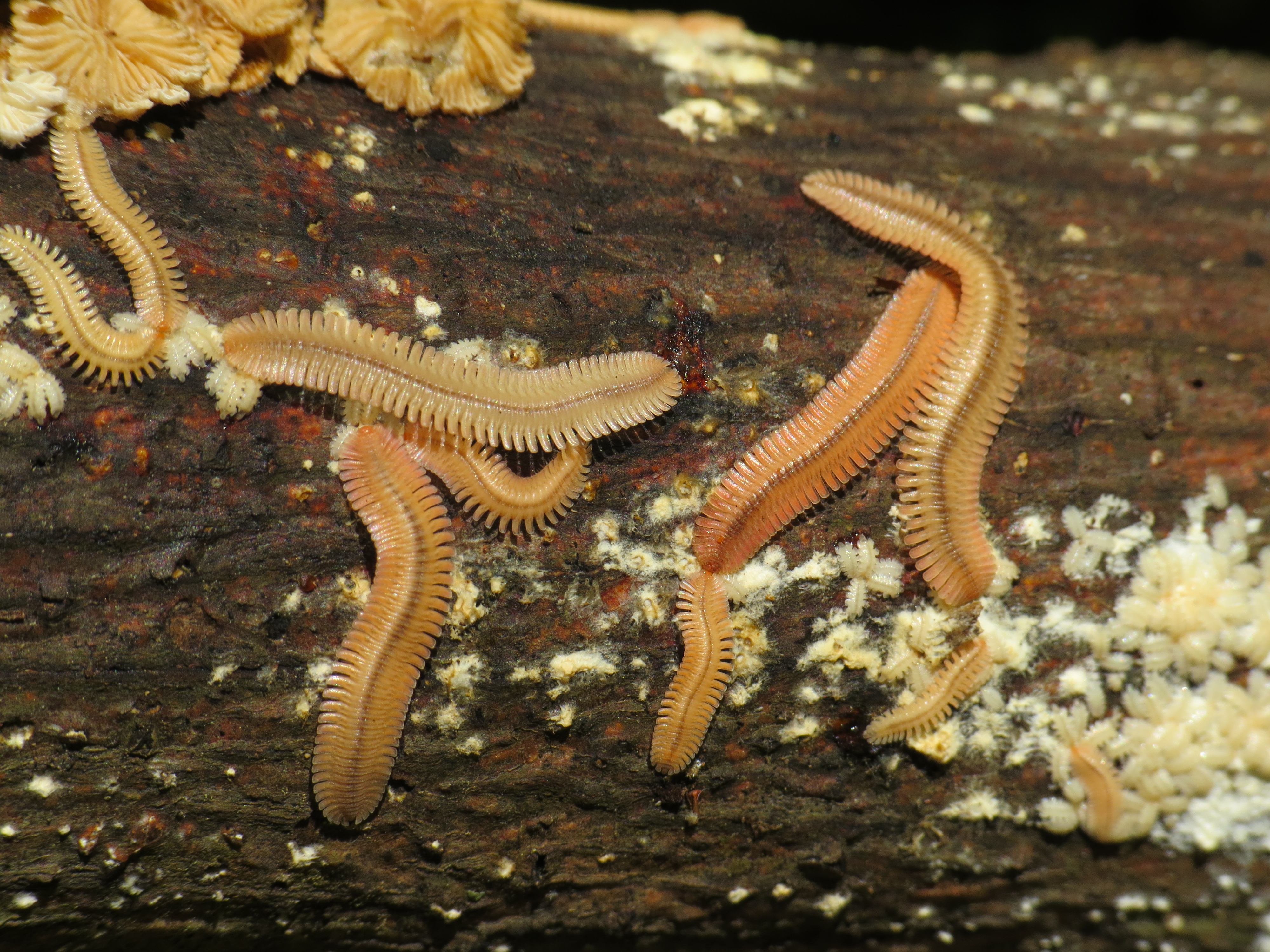|
Andrognathidae
Andrognathidae is a family of millipede in the order Platydesmida. There are about 17 genera and more than 30 described species in Andrognathidae. Genera These 17 genera belong to the family Andrognathidae: * ''Andrognathus'' Cope, 1869 * '' Bazillozonium'' Verhoeff, 1935 * ''Brachycybe ''Brachycybe ''(Greek for "short head") is a genus of andrognathid millipedes with species in the United States and East Asia. In a rare example of paternal care in invertebrates, males of most species guard the eggs until they hatch. Descrip ...'' Wood, 1864 * '' Dolistenus'' Fanzago, 1874 * '' Ebenostenus'' Mauriès, 2015 * '' Fioria'' Silvestri, 1898 * '' Gosodesmus'' Chamberlin, 1922 * '' Ischnocybe'' Cook & Loomis, 1928 * '' Mitocybe'' Cook & Loomis, 1928 * '' Phaeacobius'' Attems * '' Plutodesmus'' Silvestri, 1903 * '' Pseudodesmus'' Pocock, 1887 * '' Sinocybe'' Loomis, 1942 * '' Symphyopleurium'' Attems, 1951 * '' Trichozonium'' * '' Yamasinaium'' Verhoeff, 1939 * '' Zinaceps'' Ref ... [...More Info...] [...Related Items...] OR: [Wikipedia] [Google] [Baidu] |
Platydesmida
Platydesmida (Greek for ''platy'' "flat" and ''desmos'' "bond") is an order of millipedes containing two families and over 60 species. Some species practice paternal care, in which males guard the eggs. Description Platydesmidans have a flattened body shape with lateral extensions (paranota) on each segment. They lack eyes, and have between 30 and 110 body segments. They measure up to in length. Behavior While most millipedes feed on dead or decomposing leaf litter platydesmidans may be specialized to feed on fungi. Platydesmidans have also been studied with regard to parental investment, in that males of some species coil around eggs and young, a rare example of paternal care in arthropods. This behavior has been observed in species of '' Brachycybe'' from North America and Japan, and '' Yamasinaium'' from Japan, all are in the family Andrognathidae. Evolutionary history The only described fossil of the order is from the Mid Cretaceous (~100 Ma) Burmese amber, belongin ... [...More Info...] [...Related Items...] OR: [Wikipedia] [Google] [Baidu] |
Andrognathus
''Andrognathus'' is a genus of North American millipedes in the family Andrognathidae, containing three species: '' A. corticarius'', ''A. grubbsi'', and ''A. hoffmani''. The fossil species ''Andrognathus burmiticus'' is known from approximately 99 million year old Burmese amber Burmese amber, also known as Burmite or Kachin amber, is amber from the Hukawng Valley in northern Myanmar. The amber is dated to around 100 million years ago, during the latest Albian to earliest Cenomanian ages of the mid-Cretaceous period. The ... from Myanmar, showing that the genus had a much wider distribution in the past. References External links * Articles created by Qbugbot Millipedes of North America Millipede genera Platydesmida {{myriapoda-stub ... [...More Info...] [...Related Items...] OR: [Wikipedia] [Google] [Baidu] |
Brachycybe
''Brachycybe ''(Greek for "short head") is a genus of andrognathid millipedes with species in the United States and East Asia. In a rare example of paternal care in invertebrates, males of most species guard the eggs until they hatch. Description ''Brachycybe'' species are rather similar in appearance, varying in subtle features of the collum (first body segment) and paranota (lateral “keels” extending off of body segments). Individuals attain lengths up to 1 inch (25 mm) and range in color from orange to tan to pink. ''B. picta'' is uniquely patterned with 5 brown spots. The 9th and 10th pair of legs in mature males are modified into gonopods (reproductive appendages), and although gonopods are widely used to determine species in millipedes, the relatively simple gonopods of ''Brachycbe'' and other members of the Platydesmida show little variation and are not readily useful for species identification. Ecology While most millipedes feed on leaf litter or other p ... [...More Info...] [...Related Items...] OR: [Wikipedia] [Google] [Baidu] |
Gosodesmus
''Gosodesmus'' is a genus of platydesmidan millipede, described by Ralph V. Chamberlin in 1922, that is widely distributed in the U.S. state of California. It is monotypic, being represented by the single species, ''Gosodesmus claremontus, ''commonly known as the pink feather boa millipede. Individuals vary in color from bright pink to coral, and may possess a black or purple dorsal stripe. Body length ranges from , with up to 81 body segments. ''Gosodesmus claremontus'' occurs on the Coast Ranges as well as the Sierra Nevada The Sierra Nevada () is a mountain range in the Western United States, between the Central Valley of California and the Great Basin. The vast majority of the range lies in the state of California, although the Carson Range spur lies primarily ..., and is often found within rotted wood, especially oaks. In 2020, chemist Dr. Tappey Jones at Virginia Military Institute and colleagues, discovered a novel natural product and alkaloid in the chemical defens ... [...More Info...] [...Related Items...] OR: [Wikipedia] [Google] [Baidu] |
Millipedes Of North America
Millipedes are a group of arthropods that are characterised by having two pairs of jointed legs on most body segments; they are known scientifically as the class Diplopoda, the name derived from this feature. Each double-legged segment is a result of two single segments fused together. Most millipedes have very elongated cylindrical or flattened bodies with more than 20 segments, while pill millipedes are shorter and can roll into a tight ball. Although the name "millipede" derives from the Latin for "thousand feet", no species was known to have 1,000 or more until the discovery of ''Eumillipes persephone'', which can have over 1,300 legs. There are approximately 12,000 named species classified into 16 orders and around 140 families, making Diplopoda the largest class of myriapods, an arthropod group which also includes centipedes and other multi-legged creatures. Most millipedes are slow-moving detritivores, eating decaying leaves and other dead plant matter. Some eat fungi or d ... [...More Info...] [...Related Items...] OR: [Wikipedia] [Google] [Baidu] |

